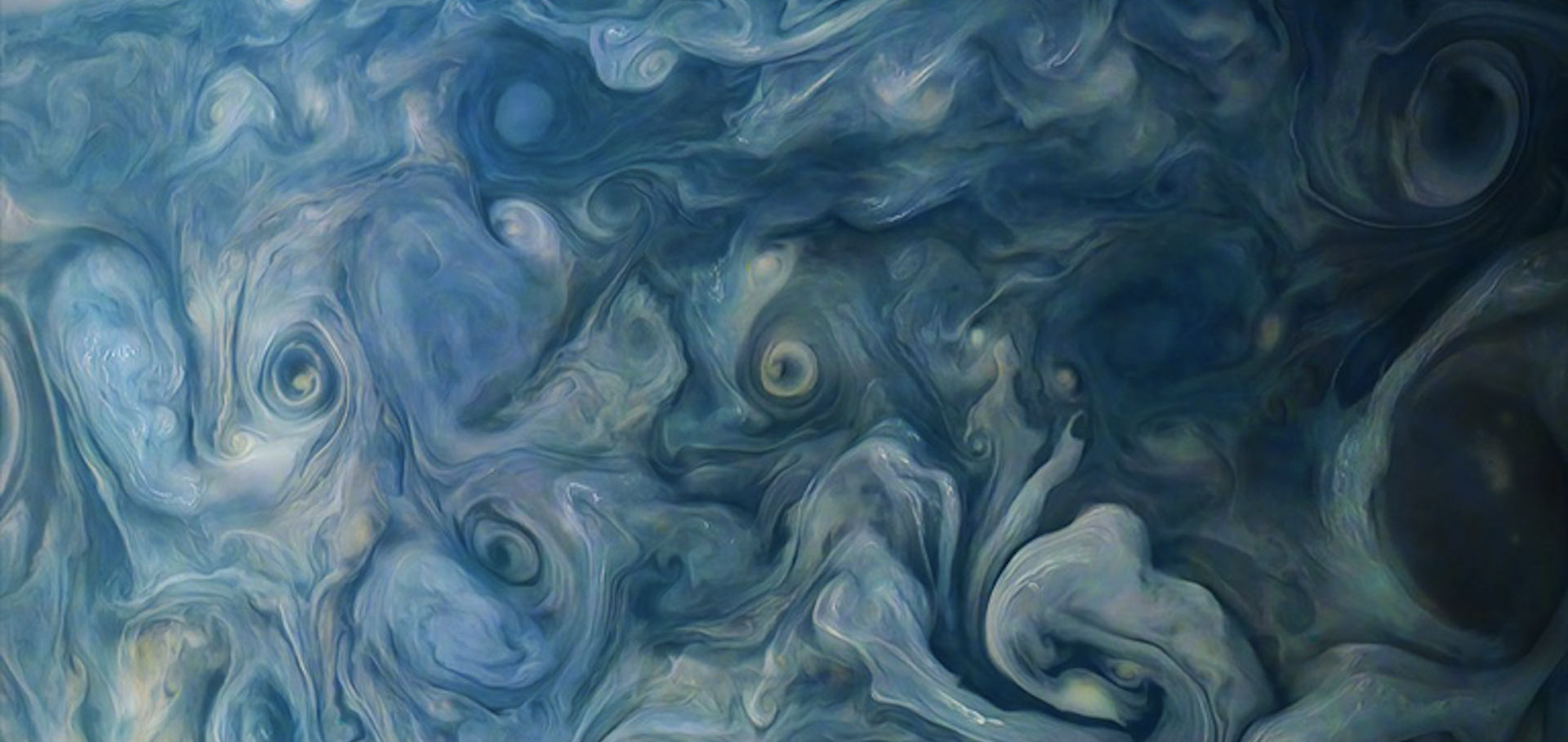Detection of water absorption in the day side atmosphere of HD 189733 b using ground-based high-resolution spectroscopy at 3.2 μm★
Monthly Notices of the Royal Astronomical Society: Letters Oxford University Press (OUP) 436:1 (2013) L35-L39
Abstract:
We report a 4.8σ detection of water absorption features in the day side spectrum of the hot Jupiter HD 189733 b. We used high-resolution (R ∼ 100 000) spectra taken at 3.2 μm with CRIRES on the VLT to trace the radial-velocity shift of the water features in the planet's day side atmosphere during 5 h of its 2.2 d orbit as it approached secondary eclipse. Despite considerable telluric contamination in this wavelength regime, we detect the signal within our uncertainties at the expected combination of systemic velocity (Vsys=−3+5−6 km s−1) and planet orbital velocity (Kp=154+14−10 km s−1), and determine a H2O line contrast ratio of (1.3 ± 0.2) × 10−3 with respect to the stellar continuum. We find no evidence of significant absorption or emission from other carbon-bearing molecules, such as methane, although we do note a marginal increase in the significance of our detection to 5.1σ with the inclusion of carbon dioxide in our template spectrum. This result demonstrates that ground-based, high-resolution spectroscopy is suited to finding not just simple molecules like CO, but also to more complex molecules like H2O even in highly telluric contaminated regions of the Earth's transmission spectrum. It is a powerful tool that can be used for conducting an immediate census of the carbon- and oxygen-bearing molecules in the atmospheres of giant planets, and will potentially allow the formation and migration history of these planets to be constrained by the measurement of their atmospheric C/O ratios.Discovery of Water at High Spectral Resolution in the Atmosphere of 51 Peg b
The Astronomical Journal American Astronomical Society 153:3 (2017) 138-138
Spectroscopic direct detection of exoplanets
Chapter in Handbook of Exoplanets, Springer (2018) 1485-1508
Abstract:
The spectrum of an exoplanet reveals the physical, chemical, and biological processes that have shaped its history and govern its future. However, observations of exoplanet spectra are complicated by the overwhelming glare of their host stars. This chapter focuses on high-resolution spectroscopy (HRS) (R = 25, 000–100, 000), which helps to disentangle and isolate the exoplanet’s spectrum. At high spectral resolution, molecular features are resolved into a dense forest of individual lines in a pattern that is unique for a given molecule. For close-in planets, the spectral lines undergo large Doppler shifts during the planet’s orbit, while the host star and Earth’s spectral features remain essentially stationary, enabling a velocity separation of the planet. For slower-moving, wide-orbit planets, HRS, aided by high contrast imaging, instead isolates their spectra using their spatial separation. The lines in the exoplanet spectrum are detected by comparing them with high resolution spectra from atmospheric modelling codes; essentially a form of fingerprinting for exoplanet atmospheres. This measures the planet’s orbital velocity and helps define its true mass and orbital inclination. Consequently, HRS can detect both transiting and non-transiting planets. It also simultaneously characterizes the planet’s atmosphere, due to its sensitivity to the depth, shape, and position of the planet’s spectral lines. These are altered by the planet’s atmospheric composition, structure, clouds, and dynamics, including day-to-night winds and its rotation period. This chapter describes the HRS technique in detail, highlighting its successes in exoplanet detection and characterization, and concludes with the future prospects of using HRS to identify biomarkers on nearby rocky worlds and map features in the atmospheres of giant exoplanets.WTS-2 b: a hot Jupiter orbiting near its tidal destruction radius around a K dwarf
Monthly Notices of the Royal Astronomical Society Oxford University Press (OUP) 440:2 (2014) 1470-1489
Abstract:
We report the discovery of WTS-2 b, an unusually close-in 1.02-d hot Jupiter (MP = 1.12MJ, RP = 1.30RJ) orbiting a K2V star, which has a possible gravitationally bound M-dwarf companion at 0.6 arcsec separation contributing ∼20 per cent of the total flux in the observed J-band light curve. The planet is only 1.5 times the separation from its host star at which it would be destroyed by Roche lobe overflow, and has a predicted remaining lifetime of just ∼40 Myr, assuming a tidal dissipation quality factor of Q′⋆=106. Q′⋆ is a key factor in determining how frictional processes within a host star affect the orbital evolution of its companion giant planets, but it is currently poorly constrained by observations. We calculate that the orbital decay of WTS-2 b would correspond to a shift in its transit arrival time of Tshift ∼ 17 s after 15 yr assuming Q′⋆=106. A shift less than this would place a direct observational constraint on the lower limit of Q′⋆ in this system. We also report a correction to the previously published expected Tshift for WASP-18 b, finding that Tshift = 356 s after 10 yr for Q′⋆=106, which is much larger than the estimated 28 s quoted in WASP-18 b discovery paper. We attempted to constrain Q′⋆ via a study of the entire population of known transiting hot Jupiters, but our results were inconclusive, requiring a more detailed treatment of transit survey sensitivities at long periods. We conclude that the most informative and straightforward constraints on Q′⋆ will be obtained by direct observational measurements of the shift in transit arrival times in individual hot Jupiter systems. We show that this is achievable across the mass spectrum of exoplanet host stars within a decade, and will directly probe the effects of stellar interior structure on tidal dissipation.Discovery and characterization of detached M dwarf eclipsing binaries in the WFCAM transit survey
Monthly Notices of the Royal Astronomical Society Oxford University Press (OUP) 426:2 (2012) 1507-1532


